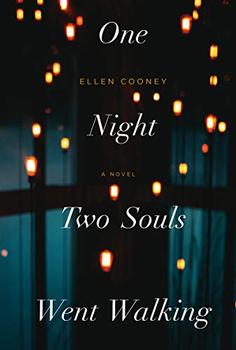Summary | Excerpt | Reading Guide | Reviews | Beyond the Book | Read-Alikes | Genres & Themes | Author Bio

This article relates to One Night Two Souls Went Walking
 Throughout Ellen Cooney's One Night Two Souls Went Walking, there are several key scenes in which our narrator – a hospital chaplain – observes therapy dogs at work. The book comments on the grace and importance of the service these animals provide for patients, from aiding recovery to providing comfort in someone's final moments.
Throughout Ellen Cooney's One Night Two Souls Went Walking, there are several key scenes in which our narrator – a hospital chaplain – observes therapy dogs at work. The book comments on the grace and importance of the service these animals provide for patients, from aiding recovery to providing comfort in someone's final moments.
Like emotional support animals, therapy animals (most commonly dogs and cats) can have a hugely positive effect on a person's mental health, offering patients a sense of companionship during a time of fear and uncertainty. But while emotional support animals tend to be privately owned pets that work consistently with one individual, therapy animals work with trained handlers, allowing them to assist multiple people and travel between institutions such as hospitals, care homes, hospices and prisons.
Representing a semblance of normality in an otherwise alien environment and providing a break from the monotony of clinical care, the use of therapy animals is an increasingly popular component of long-term, ongoing treatment packages. In addition to the recognized emotional benefits of spending time with animals (such as reduced anxiety and depression), experts have also observed several physical advantages. Through play and other interactions with an animal as a form of rehabilitation, patients with impaired motor and communication skills (such as those who have suffered a stroke) can see real progress in their recovery journey. Human-animal interaction is also known to reduce blood pressure and promote the release of endorphins, both of which can help to actively reduce pain, ease muscle tension and improve overall cardiovascular health.
Under normal circumstances, if a patient or resident of a facility would like to interact with a therapy animal, there are few risks involved as long as they have no known allergies or phobias and hygiene standards are strictly observed. With rigorous training and testing to ensure the animals have the right temperament and equally well-trained handlers, they can be used safely as part of a holistic approach to a patient's treatment plan. However, during the COVID-19 pandemic, the use of therapy animals in many hospitals, nursing homes, etc. has been put on hold. There are many uncertainties as to how the virus can and cannot be transmitted, and there have been instances of animals becoming infected. The CDC provides a list of best practices for people and facilities that use therapy or service animals. Some organizations, including Stanford Hospital and Children's Hospital LA, have continued the practice virtually through interactive Zoom calls and social media posts featuring the therapy dogs.
Though it's been gaining traction in recent years, the concept of animals as therapy is certainly not new. Back in the 19th century, world-famous nurse Florence Nightingale allowed some of her patients to keep pets on her wards, commenting that "a small pet is often an excellent companion for the sick." Psychologist Dr. Boris Levinson – sometimes considered the father of animal assisted therapy as we know it now – began calling for widespread use of the practice in the 1960s when he noticed how much more productive his sessions with children were when his pet dog Jingles was present. Observing the greater ease and responsiveness of the children when they were permitted to interact with Jingles, he explained: "A pet is an island of sanity in what appears to be an insane world." With increasing numbers of medical professionals agreeing, animal assisted therapy will likely continue to grow in popularity as an alternative treatment method.
Filed under Medicine, Science and Tech
![]() This article relates to One Night Two Souls Went Walking.
It first ran in the November 18, 2020
issue of BookBrowse Recommends.
This article relates to One Night Two Souls Went Walking.
It first ran in the November 18, 2020
issue of BookBrowse Recommends.






Your guide toexceptional books
BookBrowse seeks out and recommends the best in contemporary fiction and nonfiction—books that not only engage and entertain but also deepen our understanding of ourselves and the world around us.